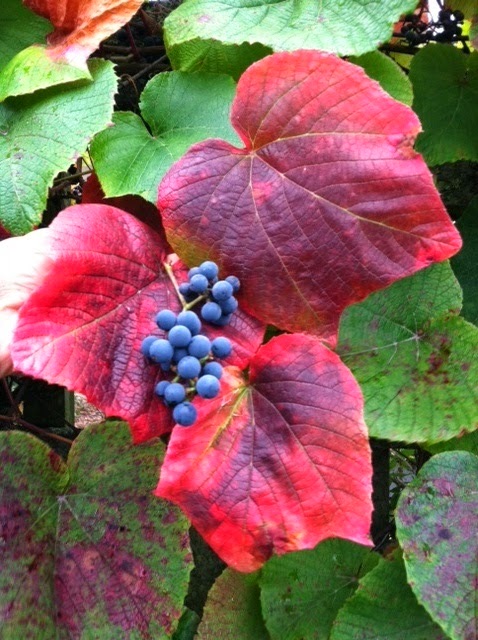|
|
| Classification |
| Kingdom | Plantae – Plants |
| Subkingdom | Tracheobionta – Vascular plants |
| Superdivision | Spermatophyta – Seed plants |
| Division | Magnoliophyta – Flowering plants |
| Class | Magnoliopsida – Dicotyledons |
| Subclass | Rosidae |
| Order | Rhamnales |
| Family | Vitaceae – Grape family |
| Genus | Vitis L. – Grape |
| Species | V. cinerea |
|
|
 |
| Vitis cinerea - Winter Grape |
Vitis cinerea common name is Winter Grape, also known as Possum Grape. It is a variety of grape is native to USA. It grows in Oklahoma and Texas. It has small black berries that are mildly unpleasant to eat. This is woody perennial vine that grows up to 12 m ( 40 ft). It is a lees branching vain. It usually climbs over small trees, shrubs, or fence rows, if not get any support it sprawls across the ground. It usually A mature vine will develop a woody base with shaggy bark, but younger branches are more slender and less shaggy.
The alternate leaves are up to 20 cm long and 15 cm across, although they are usually smaller. A typical mature leaf is cordate-orbicular in shape, dentate along its margins, and deeply indented at its base. The upper surface of this leaf is dull green, while its lower surface is densely covered with white cobwebby hairs that. A typical immature leaf is densely covered with white cobwebby hairs on both surfaces; its lower surface is often conspicuously white. The leaves are often divided into 3 lobes that are shallow and broad; they never have deep lobes. Across from each leaf, there is a single tendril and a multiple panicle of flowers or fruits. V. cinerea blooms in spring. The flowers are produced in drooping panicles up to 23 cm long and 10 cm across. The flowers are small and its color are yellowish-green. These flowers can be perfect (bisexual), staminate (male), or pistillate (female); sometimes the staminate and pistillate flowers occur on separate plants.
There is a strong floral scent that is quite sweet. Each pistillate or perfect flower is replaced by an ovoid fruit containing 1-3 brown seeds. Initially this fruit is small and green, but it eventually becomes larger (about 8-20 cm long). The fruits are juicy and black. The black surface of the fruit lacks a whitish bloom. The fruits of Winter Grape are sweet-tart when mature and edible. Each seed is 3-5 mm. in length. The ripened fruit is very popular with many upland game birds and songbirds, particularly those that inhabit shrubby or wooded area. The fruit is a food source for several mammals.























































